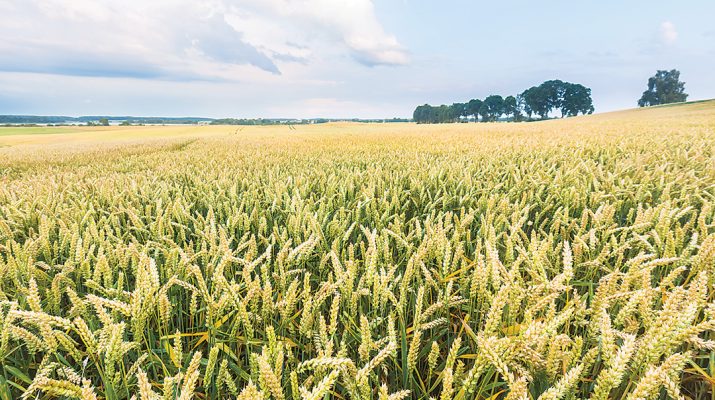Philip HOPKINS
THE ‘reliably unreliable’ rainfall last year highlighted the uncertainties of farming in East and Central Gippsland, the Gippsland Agricultural Group (GAgG) noted in its 2024 research results report.
GAgG Chief Executive, Trevor Caithness, said this ‘reliably unreliable’ rainfall in 2024 mirrored previous years, and “reminds us here at the Gippsland Research Farm that we aren’t exempt from the pressure this variability offers”.
“To highlight this, we only need look at one of our barley crops planted in the autumn, which failed due to drought-like conditions and then again eight weeks later after resowing, due to water inundation,” he said.
“These extremes reinforce the importance of precise crop and soil management practices tailored to our region’s limited water-holding capacity.”
The research report said with total rainfall in East Gippsland in 2024 was 529.6mm – below the 10-year average (625.4mm) and long-term average (641mm) – the year required strategic management to navigate uneven rainfall patterns.
“Early-year rainfall offered a modest start, with January and February close to historic trends. However, March brought significantly lower rainfall (27.8mm), leading to early moisture deficits that impacted preparations for autumn planting. This required many farmers to rely on stored water and soil management to sustain pasture and crops,” the report read.
“Winter presented a mixed picture. While May’s 13.6mm was unseasonably dry, delaying pasture growth and winter feed availability, June provided a welcome 86.8mm – above long-term averages – helping replenish soil moisture and invigorate mid-season recovery. July (66.8mm) further contributed to improved conditions, supporting grazing systems and waste storage for sort-term needs.”
The report stated that spring’s dry conditions posed the greatest challenge to come, with well-below average rainfall.
“This limited opportunities to conserve fodder and strained farmers managing new-season lambs and calves. Low rainfall in November and December compounded these pressures, leaving many reliant on supplementary feed,” the report read.
Mr Caithness said despite these challenges, 2024 reinforced the importance of strategic adaptation.
“Farmers continue to innovate, employing water storage solutions, drought-resilient pastures, and improved grazing systems to thrive in the face of climate variability. With such resilience, the region remains poised to capitalise on favourable conditions in future seasons,” he said.
Mr Caithness said key achievements of GAgG last year were:
Pasture research: Three years of data on Phalaris, fescue, cocksfoot and other species are providing vital insights into improving pasture performance;
Soil health gains: Measurable improvements in soil structure and depth highlight the success of projects like Grow More Topsoil, and;
Gippsland lamb performance trial: This exciting new initiative is driving progress in unlocking lamb production potential in our region
Mr Caithness said there were several advancements at the Gippsland Research Farm. These were:
Containment feeding system: Delivered through the Gippsland Drought Node, this system demonstrates practical, regionally relevant livestock management solutions;
Infrastructure upgrades: Continued paddock development enhances research and commercial opportunities, and;
Education centre opening: A major milestone, providing a hub for education, engagement and regional capacity building.

